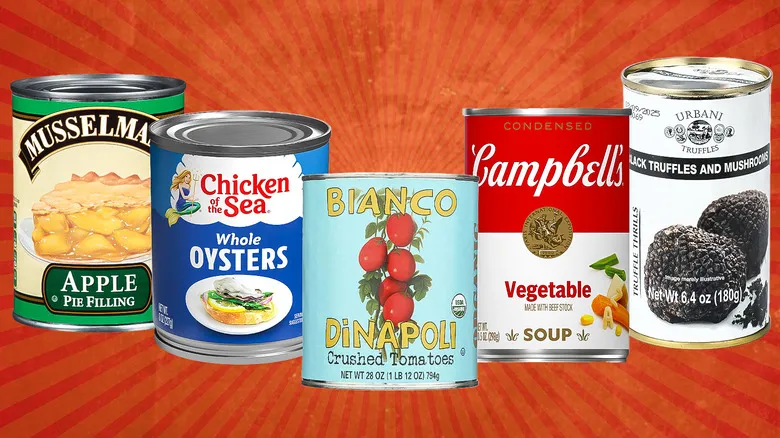Tomato sauce

At first glance, purchasing canned tomato sauce may appear to be a sensible choice, especially when you're pressed for time. However, when you analyze the cost-to-quantity ratio, it becomes evident that this convenience comes with a hefty price tag. This is generally true, but it’s particularly pronounced with premium brands. For instance, a can of Bianco DiNapoli tomato sauce can exceed $5, which isn’t exactly a steal for a small quantity.
Conversely, preparing your own tomato sauce is not only cost-effective but also straightforward. All it requires is blending some fresh tomatoes, herbs, and spices, making it a quick process as well. The result is a delicious homemade sauce that steers clear of the processed additives and high sodium levels typically found in canned varieties. Additionally, by making it yourself, you’re not just saving money; you’re also creating a fresher, more flavorful foundation for your pasta dishes, all while only spending a few extra minutes in the kitchen.
Asparagus
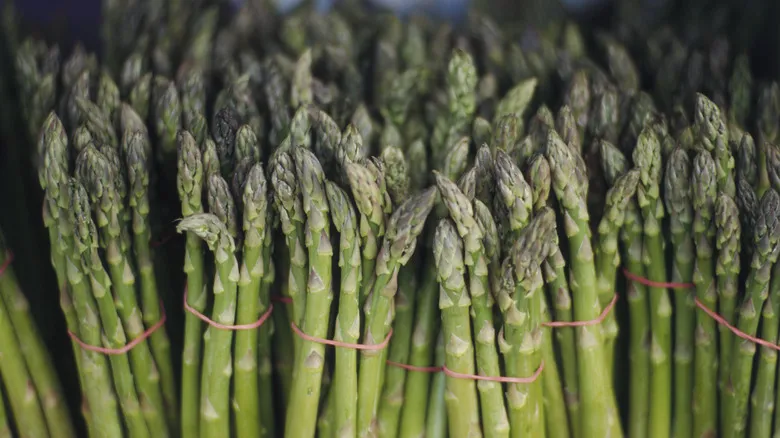
Canned asparagus is a product that often fails to justify its price. The canning process greatly reduces the quality of this otherwise enjoyable vegetable. Fresh asparagus is celebrated for its crispness and vibrant green hue, but canned versions tend to be mushy and lackluster. The flavor suffers as well, sometimes taking on a metallic or overly salty taste due to the sodium and preservatives used in the canning process.
What adds to the disappointment is the cost. Canned asparagus can be nearly as expensive as fresh, yet it offers only a fraction of the quality. Even choosing a budget store brand doesn't significantly reduce the price, making canned asparagus an even less attractive option. If you're aiming to enhance your dish with color, canned asparagus falls short; its dull olive-green shade is a far cry from the bright green of fresh spears.
When given the choice, it's advisable to purchase fresh asparagus, which can be steamed, grilled, or roasted to preserve its natural flavor and texture. The price difference is minimal, and the experience of enjoying fresh asparagus is vastly superior to that of its canned version.
Oysters
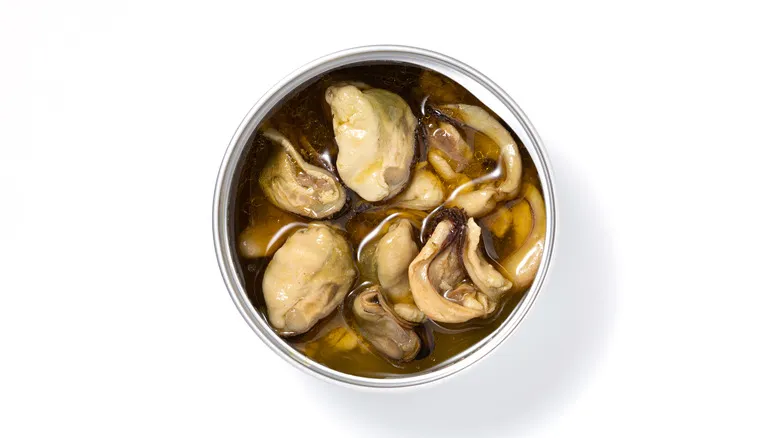
Canned oysters offer a quick and easy way to savor this delicacy without the effort of shucking and preparing fresh ones. However, this convenience comes at a price. A small 3.75-ounce can of oysters can cost around $3 or more, which can be difficult to justify when the quality is lacking, both in flavor and texture. Fresh oysters boast a delicate taste and a firm texture that is nearly impossible to replicate in a can. In contrast, canned oysters often become mushy and lose their natural brininess, making them a poor alternative to the real thing.
Whether enjoyed raw, baked, or grilled, fresh oysters deliver a far superior culinary experience. Their rich flavor enhances a variety of dishes in ways that canned oysters simply cannot. While canned oysters may be acceptable in recipes where their flavor is masked, such as in an oyster chowder, they generally do not provide good value for those who truly appreciate oysters, especially when considering the inferior quality of the product.
Soup
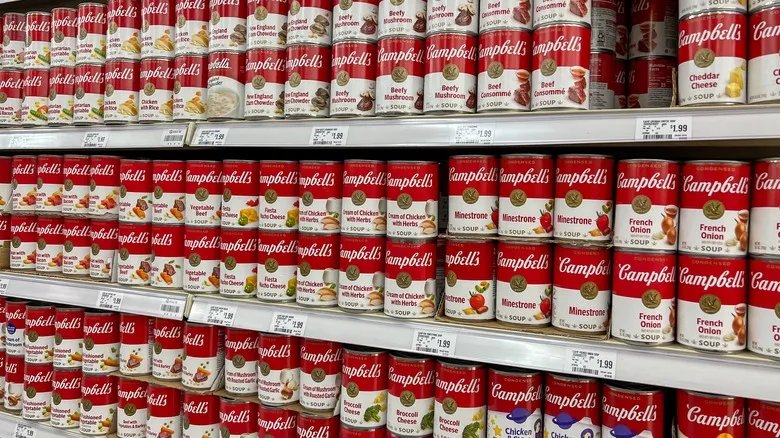
Soup is a staple canned item commonly found in kitchens, yet it often comes with a hefty price tag, especially when you consider its quality. Well-known brands like Campbell's and Progresso have experienced notable price hikes over the years, making it hard to rationalize the expense for what you actually receive. Many canned soups are packed with sodium, preservatives, and various additives, which can undermine the health benefits of the vegetables or proteins they include.
In general, homemade soup is a much more advantageous option. You can prepare a large batch that lasts for multiple meals, and you have the freedom to choose the ingredients and seasonings to match your preferences. The cost of fresh vegetables, broth, and other components is often lower than what you'd spend on the equivalent amount of canned soup, and the taste difference is significant. If you're craving a warm, comforting bowl of soup, making it yourself is typically the superior choice, even if it requires a bit more time to prepare.
Truffles

Truffles are celebrated as a gourmet delicacy, known for their unique aroma and deep, earthy flavor. However, when it comes to canned truffles, much of that signature allure is diminished. While they provide convenience, these canned options can be quite pricey, often costing over $10 for a small container. Unfortunately, the canning process diminishes the truffle's natural scent and richness, leading to a product that does not deliver the true gourmet experience.
Given their high price, it’s hard to justify buying canned truffles when their quality is significantly lacking. If you want to savor the authentic essence of truffles, it’s better to invest in fresh truffles or consider alternatives like truffle oil or truffle salt. These substitutes can offer a similar flavor profile at a much more affordable price. Although canned truffles may add a hint of luxury, their lack of genuine taste and value makes them considerably less attractive.
Peaches

Canned peaches are frequently promoted as a convenient substitute for fresh fruit, but they have several drawbacks that diminish their value. One major concern is that canned peaches are typically preserved in syrup, which introduces a considerable amount of added sugar to what could otherwise be a nutritious snack. For instance, a standard can of Del Monte peaches is packed in high-fructose corn syrup and retails for about $2, which hardly represents a good deal given the nutritional trade-off.
When comparing costs, fresh peaches often prove to be more economical, especially when they are in season, as they can be found at a similar or even lower price per pound than canned options. Fresh peaches provide superior texture, flavor, and nutritional benefits without the extra sugars and preservatives. Additionally, if stored correctly, you can prolong their freshness.
If convenience is your main concern, opt for peaches packed in juice instead of syrup, as they are significantly healthier. However, whenever possible, choosing fresh peaches is the best way to maximize your value.
Sweet potatoes

The ease of using canned sweet potatoes is undeniable, but they come with notable drawbacks in terms of quality and value. A 15-ounce can typically costs more than $2, making it similar in price to fresh sweet potatoes. However, this convenience may not be worth it. Canned sweet potatoes are usually loaded with preservatives and added sugars, such as corn syrup, which diminish their natural taste and nutritional value.
In contrast, fresh sweet potatoes offer a far superior flavor and texture. Roasting or baking them enhances their inherent sweetness and results in a delightful crispness that canned versions simply cannot replicate. Canned sweet potatoes often have a mushy texture and lack the rich flavor of their fresh counterparts. While they may be suitable for certain baked dishes like casseroles or pies, when it comes to savoring the full spectrum of flavor and texture, fresh sweet potatoes clearly stand out as the better choice.
Baked beans

When it comes to classic American comfort food, baked beans are a timeless favorite. However, before you reach for that can at your local grocery store, think about this: a standard 16-ounce can of baked beans usually costs around $2. Unfortunately, the price often doesn't reflect the quality inside. Canned baked beans can be overly sweet and have a processed taste that doesn't compare to homemade versions.
Preparing baked beans from scratch is not only more budget-friendly but also allows you to have better control over the flavor and texture. Dried beans, which are the most cost-effective choice, typically cost only a small fraction of what a can does. A bag of dried beans can provide multiple servings and lets you season them to your preference, steering clear of the excessive sugars and preservatives found in canned options. Even if you choose to use pre-cooked canned beans to save time, adding your own ingredients like onions, bacon, and spices can enhance the dish while keeping costs significantly lower than purchasing ready-made baked beans in a can.
Chicken

Picture yourself reaching for a can of chicken, eager for a quick and delicious source of protein. Instead, you end up with a dry, flavorless option that leaves much to be desired. At around $2 for a small 5-ounce can — and even more for gourmet varieties — canned chicken offers convenience that doesn't quite justify its price when you consider the quantity and quality.
While it may seem like an easy solution for meals like quesadillas, where the chicken isn't the star, fresh chicken provides a juicy, flavorful experience that canned options simply can't match. When you look at the cost per ounce, purchasing fresh chicken on sale often results in a price that is similar to, or even lower than, canned chicken. Plus, using fresh chicken allows you to incorporate delicious herbs and vegetables, enhancing the flavors throughout the meat and creating a more vibrant and satisfying dish. This approach not only results in a healthier, more natural meal but also eliminates the need for excess sodium or preservatives.
Apple pie filling

If you're planning to bake a homemade apple pie, resist the urge to opt for canned filling for the sake of convenience. Priced at about $2 for a 20-ounce can, you're not only spending extra on an ingredient packed with high-fructose corn syrup and artificial flavors, but you're also sacrificing taste and quality. Using fresh apples, however, allows you to craft a pie that is truly remarkable. While it may require a bit more time to prepare, that’s all part of the joy of baking.
Choosing fresh apples gives you the opportunity to select the perfect variety for your pie—whether you prefer the tartness of Granny Smith or the sweetness of Honeycrisp. You have full control over the sugar content, resulting in a more balanced flavor. Fresh apples maintain their texture and juiciness beautifully during baking, a quality that canned filling simply cannot match. Interestingly, when you break down the cost per pound, fresh apples can often be just as economical, if not more so, than canned filling. So, while making fresh, homemade apple pie filling may take more time, the incredible flavor you achieve makes it a deliciously rewarding effort.
Pre-cooked pasta
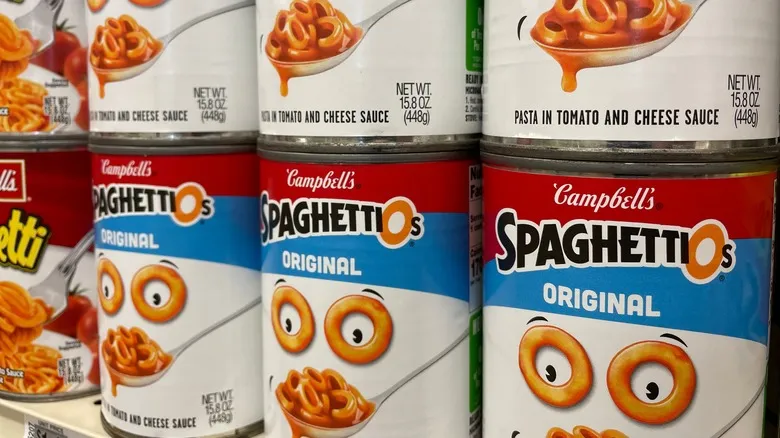
Pre-packaged, canned pasta meals, such as ravioli or spaghetti with meatballs, may seem like an economical and time-efficient choice, typically priced at around $2 per can. However, these convenience options come with considerable drawbacks in terms of quality, taste, and nutrition. The pasta inside these cans is often overly soft and mushy, missing the delightful al dente texture that freshly cooked pasta offers. The sauces tend to be excessively sweet or salty, with a processed flavor that pales in comparison to the rich, vibrant tastes of homemade sauces.
In reality, making pasta from scratch is both quick and affordable. A box of dry pasta and a few basic ingredients for a homemade sauce can yield a meal with a flavor and texture that far surpasses anything from a can. The joy of savoring a freshly prepared pasta dish, customized to your preferences, is well worth the minimal extra effort involved. Ultimately, canned pasta is not a worthwhile investment when you factor in the compromise on quality and the simplicity of preparing it fresh.
Chili
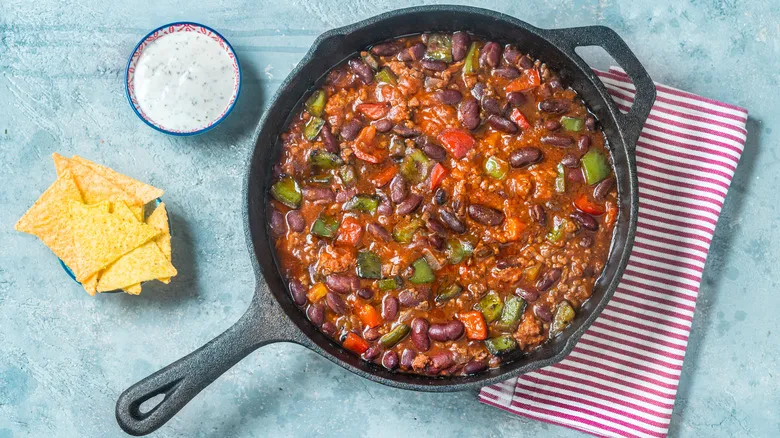
Many people reach for canned chili due to its convenience. It serves as a quick and easy meal option for hectic weeknights. The simplicity of just opening a can and warming it up is hard to resist when you're short on time. But is that convenience really worth it? We're not entirely convinced. A typical 15-ounce can usually costs between $2 and $3, and it's loaded with preservatives and high sodium levels, making processed food less than ideal for your health. Additionally, canned chili often lacks depth of flavor and can have a disappointingly mushy texture.
On the other hand, preparing chili from scratch not only enhances the taste but is also more economical. The individual components for homemade chili—like beans, tomatoes, and ground beef—are quite affordable, and you can easily make a large batch to enjoy over multiple meals or freeze for future use. Ultimately, while canned chili may suffice in a hurry, the rich flavors, satisfying texture, and overall value of a homemade version truly nourish the soul and make each bite a delight to savor.
Recommended

The Best Way To Prevent Mold On Fresh Berries
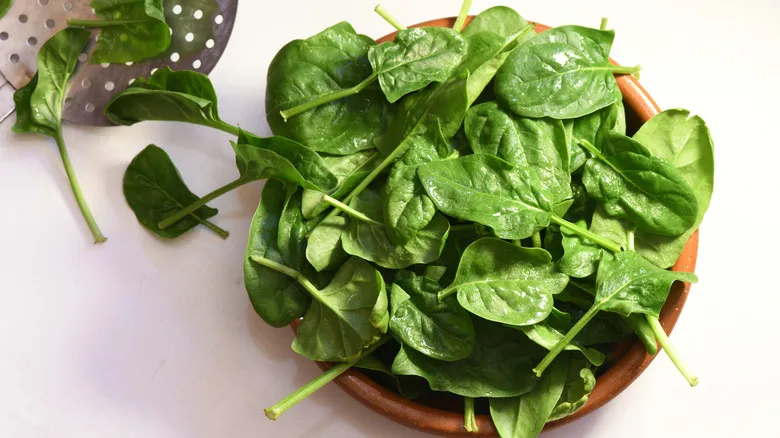
Your Foolproof Guide For Washing Spinach

The Last Day You Can Still Eat Ricotta Cheese After Opening It

Foods You Should Avoid At All Costs At The Continental Hotel Breakfast Buffet
Next up

